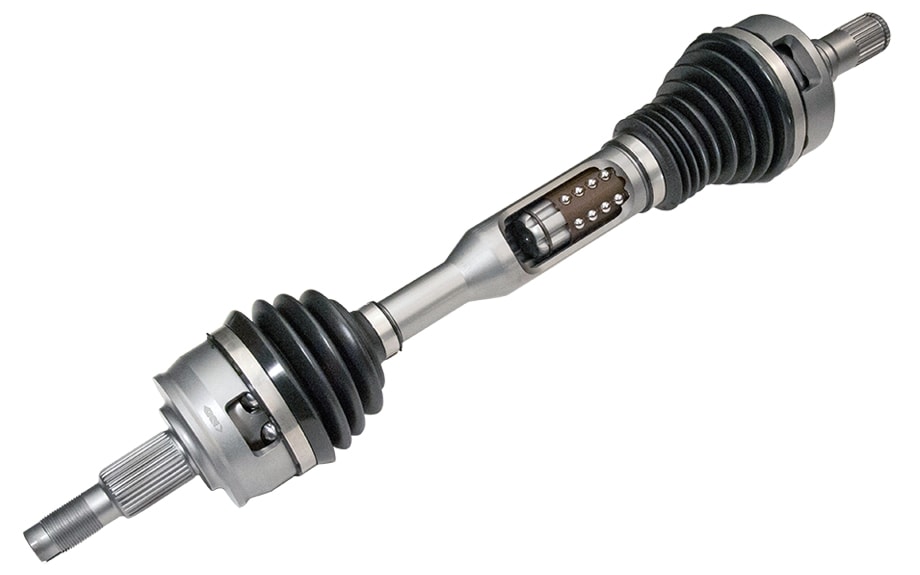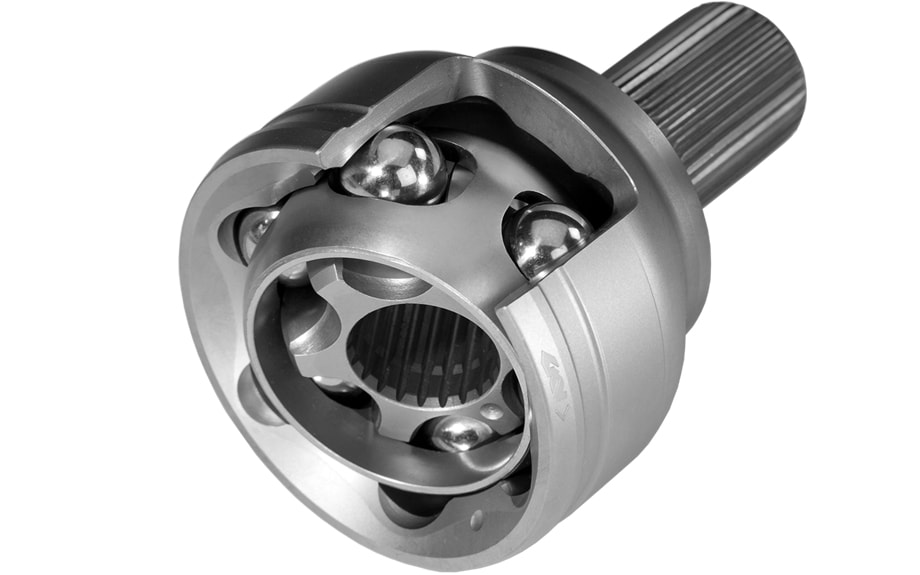The precision engineering that makes drivelines smaller and lighter.
Global vehicle platforms must accommodate a wide range of powertrains with different power outputs. One of the main challenges for engineers is how to keep suspension geometries and dimensions common while also optimizing the car’s performance, efficiency and refinement.
The way a driveline is connected directly affects this. The design of the constant velocity joints (CV joints) can significantly influence the driveline’s mass, its packaging and the way the vehicle performs.
GKN Driveline’s development of the Countertrack® principle for CV joints was a direct response to this challenge.

Essential equipment
CV joints connect the drivetrain and transfer the torque. Front-wheel drive vehicles generally have two CV joints, connecting the sideshafts to the front wheels. All-wheel drive vehicles with more complex layouts can have up to seven. And they must function under rotation, articulation and axial displacement to allow the vehicle’s suspension to move and the wheels to steer.
For decades the standard solution for fixed CV joints has been the Rzeppa CV joint, proven concept that uses balls to transfer the torque between ball races. Rzeppa joints provide effective articulation up to 47°, but at higher installation angles its sphere forces can generate heat, significantly reducing the joint’s efficiency
How Countertrack® works
GKN Automotive’s Countertrack® CV joints feature a series of innovations to improve performance. While the ball tracks in Rzeppa joints all face open in the same direction, GKN researchers developed opposed tracks that better balance the joint’s internal forces.
This Countertrack® principle reduces friction and heat generation in the spheres, improving efficiency. For front-wheel drive platforms with sideshafts mounted at higher installation angles, they can be 50-60% more efficient, 8% smaller and 15% lighter.
Combining the opposed tracks with specially adapted track forms and more precise machining processes also enables Countertrack® joints to increase maximum steering angles.

Advanced CV joints
GKN Automotive has applied the Countertrack® concept to plunging CV joints for rear wheel drive platforms, the PACE award-winning VL3, while two types of fixed CV joint use the principle: SX and PX joints.
SX joints feature an S-shaped longitudinal track form and are used in front sideshafts to enable higher steering angles of up to 52°, improving low-speed manoeuvrability.
PX propshaft joints have a track with a flat radial offset shape that improves the joints’ durability and thermal performance in vehicles like SUVs and light duty trucks where installation angles are higher.
Supported by GKN Automotive’s global presence, global platforms are already using GKN’s patented Countertrack® solutions to achieve significant drivetrain efficiency improvements and also mass reductions.